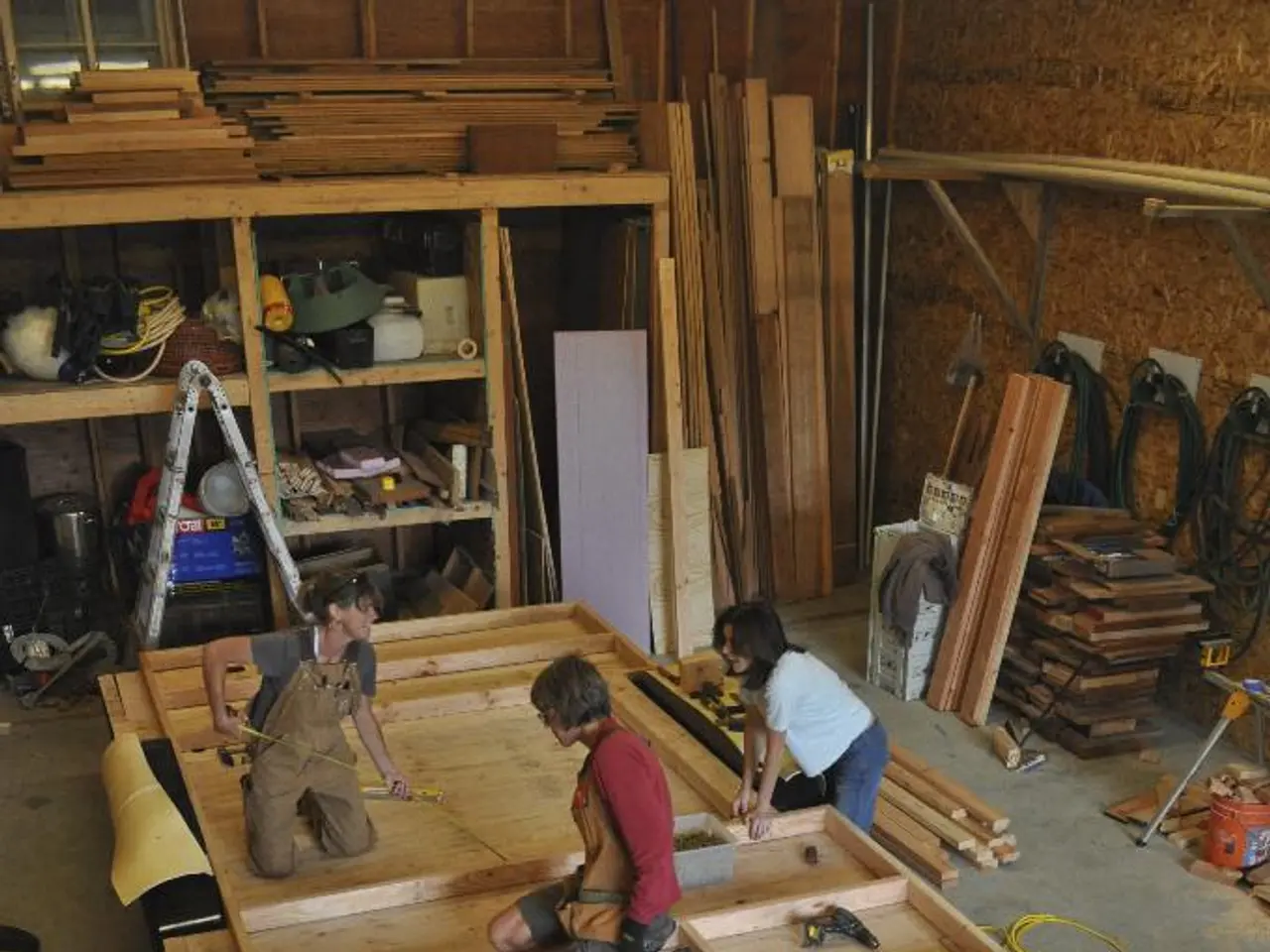Struggles persist as colleges aim to rekindle the appeal of manufacturing education
In the heart of Ohio, Lorain County is grappling with a growing issue - a significant number of unfilled manufacturing jobs. According to recent data, over 400,000 such positions remain vacant nationwide, with many of them in advanced manufacturing.
Lorain County Community College (LCCC) has been at the forefront of addressing this issue, but not without challenges. The college has recently slimmed down its fast-track programs from 60 to 13 due to mixed success in attracting students. Currently, LCCC produces 120 graduates each year in advanced manufacturing, a marked increase from the 43 graduates a decade ago.
One of the programs that LCCC has introduced is a microelectronic manufacturing class, a partnership with Midview High School that began two years ago. However, the microelectronic manufacturing program, like many others, is administered and taught by a single employee, a situation deemed unsustainable.
The college's efforts to prepare students for tomorrow's jobs have been hampered by the diverse needs of local companies in the manufacturing field. Davis Jenkins, a senior research scholar at Columbia University's Community College Research Center, argues that colleges may create programs that are too narrow, making it difficult to identify a clear set of skills to teach.
The pay offered by small manufacturers is often low, despite an expectation of training beyond a high school diploma. Nationwide, automation has reduced the earning power for many manufacturing jobs, and the wage premium for such jobs has gone away, according to Jyotishi of New America.
Despite these challenges, there are success stories. Nolan Norman, an 18-year-old student, is enrolled in a microelectronic manufacturing bachelor's degree program at LCCC this fall. He spent the summer working in a job in the field that pays $18 an hour and gives him college credit.
The situation is not unique to Lorain County. Gogebic Community College in rural Michigan suspended its 22-year-old manufacturing technology program this spring due to low enrollment.
President Donald Trump's administration is attempting to tackle this issue through tariffs and by leveraging them to grow manufacturing jobs in the United States, including those that involve machinery or robotics and training after high school. A provision in Trump's new "one big, beautiful bill" promises a boost to manufacturing education, allowing low-income students to use federal Pell Grants for short-term certificate programs. However, the Workforce Pell program won't be up and running until the 2026-27 academic year.
As the manufacturing landscape continues to evolve, colleges face the challenge of adding and revising their training based on employer input to prepare students for the jobs of tomorrow, not just today. With over 400,000 unfilled manufacturing jobs across the nation, the need for skilled workers in this field is more pressing than ever.
Read also:
- House Infernos: Deadly Hazards Surpassing the Flames
- Aspergillosis: Recognizing Symptoms, Treatment Methods, and Knowing When Medical Attention is Required
- Accident at Rodalben Results in Injuries; Geoskop Area near Kusel Affected After Stormy Weather
- Doctor's mistrust reported by father of child who succumbed to diphtheria






